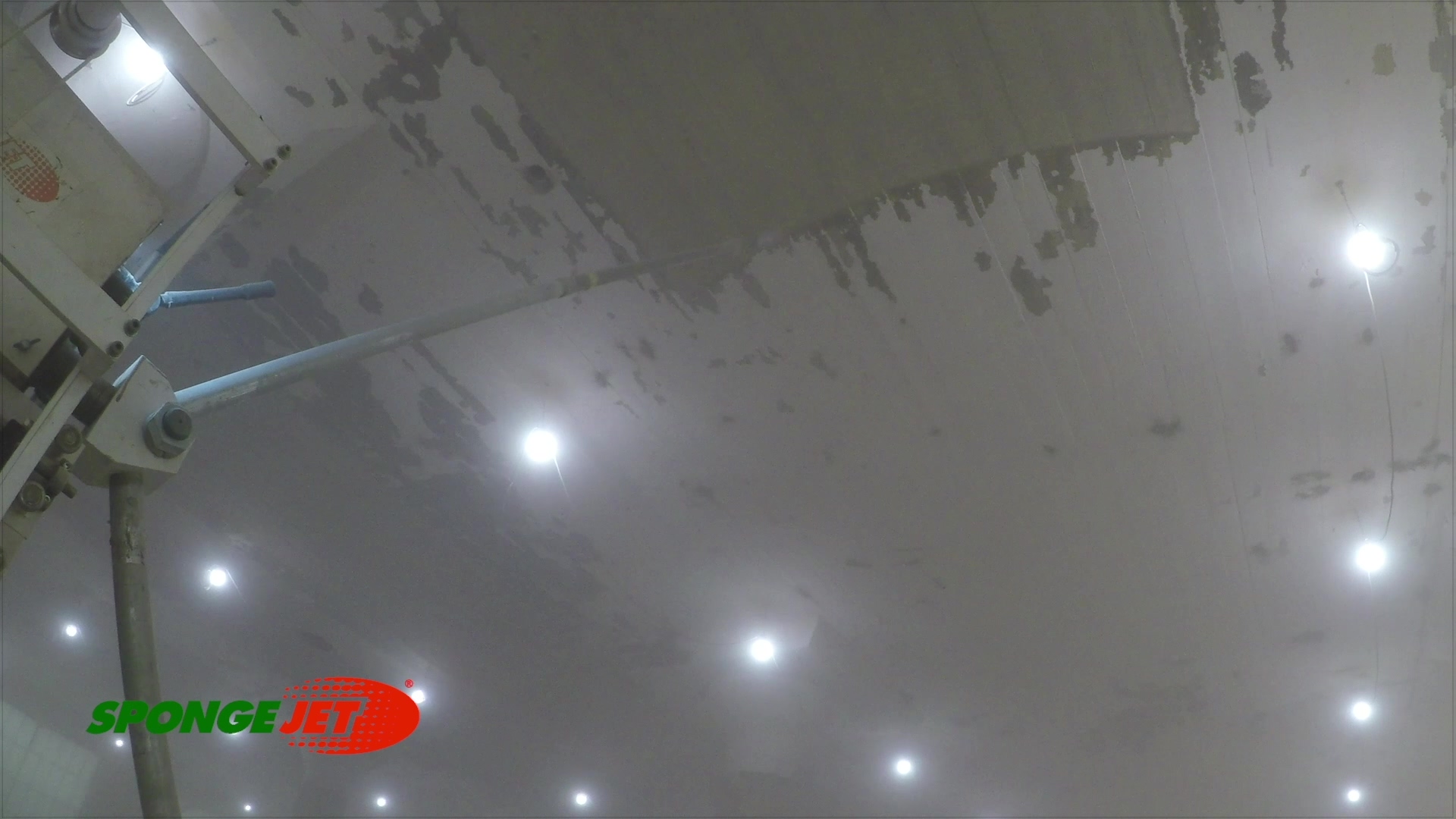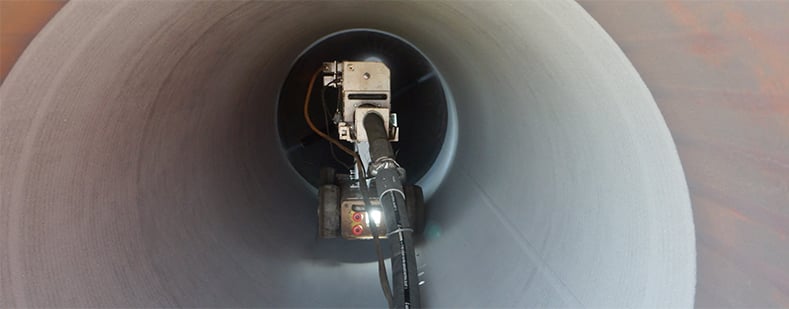As contractors and facility managers look for ways to save money, reduce waste, and increase worker safety on abrasive blasting projects, robotic abrasive blasting is becoming more prevalent. Robotic blasting allows for precise control, high productivity rates and reduced abrasive media consumption compared to manual blasting. In addition, robotic abrasive blasting is a safer alternative to manual blasting.
1. Blast Pattern Consistency
One of the major benefits of robotic abrasive blasting is the consistency of the blast speed and pattern. Machines can achieve a near perfect overlap between each pass of the nozzle, eliminating the waste of over blasting so common with manual blasting. According to Ted Valoria, vice president of Sponge-Jet, North America, the speed and blast pattern can be set remotely at the outset of the blast session and does not change. “Robotic abrasive blasting with sponge media eliminates fatigue factors, such as movement of the blaster as he gets tired or loses focus for a minute. Robotic abrasive blasting is going to give you the same result throughout the duration of the session,” explained Valoria.

2. Robotic Blasting is Faster
In abrasive blasting, as with anything in today’s world, it all comes down to economics. Robotic abrasive blasting can be six to eight times faster than manual abrasive blasting. This saves time, money and manpower as compared to manual abrasive blasting. And considering the consistent and high quality results that robotic abrasive blasting achieves, asset owners are not sacrificing speed over quality.
For more information, visit: https://blog.spongejet.com/is-robotic-abrasive-blasting-faster-than-manual-blasting
3. Increased Worker Safety
In recent years, confined space entry has received national attention as one of the leading causes of worker deaths. Abrasive blasting robots are typically operated remotely from outside the blast area. This means that workers are not in the confined space during the abrasive blasting process, allowing for greater safety overall. Cameras mounted to the robotic blasting apparatus provide operators with control over the blast pattern and speed without being directly in the pipe or confined space.
It's also much safer to clean and profile surfaces like ceilings, floors, and walls with robotics. Robotic blasting in these areas removes workers from staging and scaffolding, decreasing fall risks. When workers trade blast nozzles for control panels, injury risk is dramatically reduced.
For more information, visit: https://blog.spongejet.com/is-robotic-abrasive-blasting-safer-than-manual-blasting
4. Industry and Project Versatility
Robotic abrasive blasting serves a wide variety of industries, including oil and gas, marine, water, waste water, hydroelectric penstocks, building restoration and rehabilitation, power generation and petrochemical. “Robotic abrasive blasting can be done almost anywhere there’s a pipe or heavy duty duct work in any major industrial plant,” said Valoria. Typically, robotic abrasive blasting can be used on the following substrates: cast iron, steel, duct work and concrete. Tanks, pipes, floors, ceilings, and walls can all be abrasive blasted with robotics
For more information, visit: https://blog.spongejet.com/what-are-the-best-projects-for-robotic-abrasive-blasting
Sponge-Jet and Robotic Abrasive Blasting
Sponge-Jet is an industry leader in robotic abrasive blasting, combining the advantages of sponge media with robotic blasting. While Sponge-Jet has a robotic blasting unit (Robotica) many developers of robotic abrasive blasting tools have chosen Sponge Media as their abrasive of choice. Because sponge media limits dust and has substantially lower rebound, sensitive electronics, gears, and motors are able to perform reliably. An added benefit of Sponge Media's 99% dust reduction is improved visual clarity for the robot's cameras, giving operators eyes inside containment or confined spaces.
Sponge-Jet's Robotica has programmable drive speed in both forward and reverse, as well as forward and aft flush-mounted cameras with a monitor. Robotica's blast pattern can be adjusted depending on the specifications called for on the job from a white metal clean to a commercial blast. The combination of Robotica and Sponge Media have allowed contractors to clean and profile pipeline efficiently at as far as 2,000ft (600m) from the Feed Unit (blast pot).








